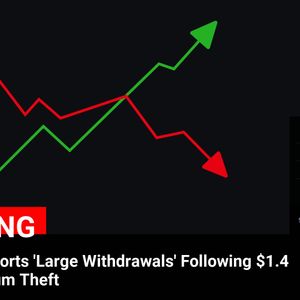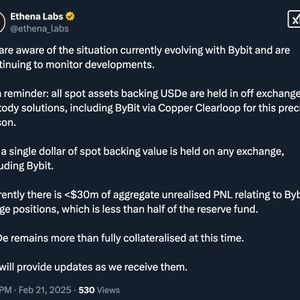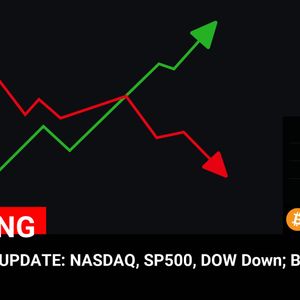GBP/USD has been on a bullish run, hitting levels unseen since mid-January. But like any good rally, it’s taking a breather. Are the bulls just pausing for a moment before their next charge, or is this a sign of exhaustion? All eyes are now on the upcoming UK economic data releases, which could be the catalyst for the next big move in the GBP/USD pair. Let’s dive into the price analysis to see what the charts and indicators are telling us, and what forex traders should be watching out for. GBP/USD Bulls Take a Pause: What’s Happening? After a significant surge, GBP/USD experienced a slight dip of 0.16% on Tuesday, settling at 1.2605. This pullback comes after the pair reached its highest point in over a month. Think of it like a runner pausing to catch their breath before the final sprint. But is this just a temporary pause or something more significant? Minor Retracement: The 0.16% dip is relatively small, suggesting it could be a normal market fluctuation rather than a major reversal. Eyes on 100-day SMA: The pair is still aiming for the 100-day Simple Moving Average (SMA) at 1.2660, indicating underlying bullish intent. Momentum Indicators Cooling Off: The Relative Strength Index (RSI) and Moving Average Convergence Divergence (MACD) are hinting at a slowdown in bullish momentum, but not a complete bearish takeover yet. Decoding the Technical Signals: Is the Bull Run Over? Technical analysis provides crucial clues about market sentiment and potential future movements. Let’s break down what the key indicators are showing for GBP/USD : Relative Strength Index (RSI): Currently at 62, down from higher levels. This indicates a decrease in buying pressure. Crucially, it remains above 50, still in bullish territory. Actionable Insight: The RSI suggests the bullish momentum is slowing, but not reversing. Traders should be cautious but not necessarily bearish yet. Moving Average Convergence Divergence (MACD): Histogram is flat with green bars. This suggests the recent price action is more of a technical correction. Green bars still indicate bullish momentum, albeit weakened. Actionable Insight: The MACD reinforces the idea of a pause rather than a reversal. The underlying trend might still be upward. 100-day Simple Moving Average (SMA): Currently at 1.2660. Acts as a potential resistance level. Breaking above this could signal a continuation of the bullish trend. Actionable Insight: Traders should watch for price action around the 1.2660 level. A decisive break above could open the door for further gains. In a nutshell: The technical indicators suggest a temporary pause in the bullish momentum. It’s not a bearish reversal, but rather a cooling-off period before the next potential move. Traders should monitor price action closely and prepare for potential volatility. The Fundamental Game Changer: UK Economic Data on the Horizon While technicals provide a snapshot of market sentiment, economic data is often the fundamental driver that dictates the larger trend, especially in forex markets. Wednesday is a key day for GBP/USD as the UK is set to release critical economic data : Inflation Figures: These numbers are crucial for understanding the Bank of England’s (BoE) policy direction. Higher-than-expected inflation could push the BoE to maintain or even increase interest rates, which is generally positive for the Pound. Retail Sales Numbers: These figures reflect consumer spending and overall economic health. Strong retail sales could indicate a robust economy, also supporting the Pound. Why is this data so important? These reports will directly influence expectations for the Bank of England’s monetary policy. Here’s how: Hawkish BoE Stance: If inflation remains stubbornly high and retail sales are strong, the BoE might maintain a hawkish stance, signaling potential future rate hikes. This would likely boost the Pound. Dovish BoE Shift: Conversely, weaker inflation and sluggish retail sales could push the BoE towards a more dovish stance, potentially hinting at future rate cuts. This could weaken the Pound. Impact on GBP/USD: Positive Data (Strong Inflation & Retail Sales): Could provide the fundamental push for GBP/USD to break above the 100-day SMA and resume its upward trend. Negative Data (Weak Inflation & Retail Sales): Might lead to a deeper consolidation phase or even a bearish correction for the pair. Navigating the GBP/USD Landscape: Key Takeaways for Traders So, what should forex traders do amidst this market pause and anticipation of key economic data ? Monitor Economic Data Releases: Keep a close watch on the UK inflation and retail sales figures on Wednesday. These will be major catalysts for GBP/USD movement. Watch the 100-day SMA: The 1.2660 level is a crucial resistance. A break above could signal renewed bullish momentum. Manage Risk: Given the potential for volatility around data releases, ensure you have proper risk management strategies in place. Use stop-loss orders and avoid over-leveraging. Stay Informed: Keep up-to-date with the latest forex news and price analysis to make informed trading decisions. Conclusion: The Calm Before the Storm? GBP/USD is currently in a state of pause, a moment of calm before potentially significant economic data releases. The technical analysis suggests a temporary cooling of bullish momentum, but the underlying trend remains constructive. The upcoming UK inflation and retail sales data are the wild cards that will likely determine the pair’s next direction. Will the bulls regain their power and push higher, or will the data trigger a shift in market sentiment? Forex traders need to be prepared for potential volatility and ready to react to the incoming economic data to capitalize on the next move in GBP/USD . To learn more about the latest Forex market trends, explore our article on key developments shaping currency valuations and trading strategies.



















